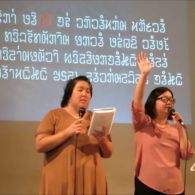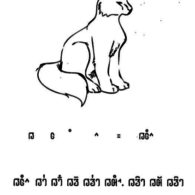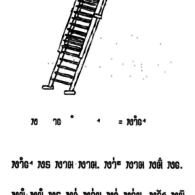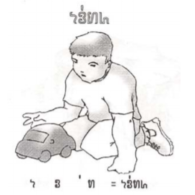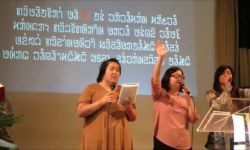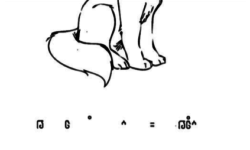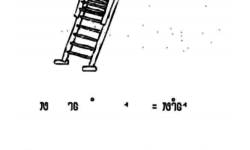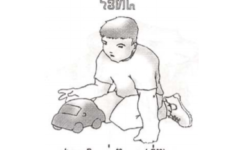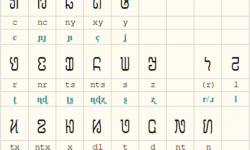Profile
The Hmong language, or more accurately the Hmongic group of languages, hold at least three records in the endangered alphabets field: most scripts, most invented scripts, and most different countries in which a script has been invented. They may also hold the record for number of writing-genesis stories.In part, this is because the Hmong themselves have traditionally been widely scattered over southeast Asia and southern China. In part, it’s because for much of their history their language communication has been oral rather than written. In part it’s because history has scattered them across the globe, and in an effort to retain their cultural identity, groups of Hmong have created scripts for themselves in countries as far afield as Australia and the United States.
To race through a catalogue dealt with in detail here, the Hmong have five scripts for which there is some kind of historical evidence or hint; nine scripts that were definitely used somewhere, at some point in time; three scripts that are apparently being tried out experimentally at the moment; two that are “unclassified”; and four others that are “widely used,” though that is, of course, a relative term.
Of those in “widespread” usage, the Romanized Popular Alphabet is based on the Latin alphabet and thus doesn’t qualify for this atlas; the Pollard Script is apparently being used by between 200,000 and 500,000 people in China, so it can hardly be said to be endangered and that, too, doesn’t qualify for this atlas. Pahauh Hmong is indeed in the atlas. That leaves Nyiakeng Puachue Hmong.
The Nyiakeng Puachue Hmong script, is also called the Cher Vang Hmong script after its inventor, the Reverend Chervang Kong Vang, who created it in the 1980s for use within his church community. This script has been used by members of the United Christians Liberty Evangelical church in America ever since, in printed material and videos. It is also used to write White Hmong and Green Hmong in Laos, Thailand, Vietnam, France, Australia, and Canada.
Nyiakeng Puachue means “Genesis complete,” but the script has other names including “Hmong Blessing Script” and “flower-cloth Hmong script,” Hmong culture closely identifying writing with embroidery or decorative weaving.
One of the Hmong writing-genesis stories, in fact, tells that the Nanman, the ancestors of the Hmong, lived in central-east China, but after being defeated in battle by the Chinese, they had to flee southwards. One version says that in crossing a river, the Hmong lost their books and thus their ancestral writing tradition. Another version says their writing was preserved in the “flower cloth,” or embroidered clothing, of Hmong women.
There’s no way to know, of course, but it’s interesting to consider a parallel with Nüshu: a writing system kept in secret by women, concealed among the decorative work in their clothing, hiding in plain sight.
You can help support our research, education and advocacy work. Please consider making a donation today.
Links
General Script, Language, and Culture Resources
Community Resources
- Nyiakeng Puache Hmong Gospel
- UCLE Church Using Nyiakeng Puache Hmong Script
- A Christian service being conducted by the Reverend Chervang Kong Vang

